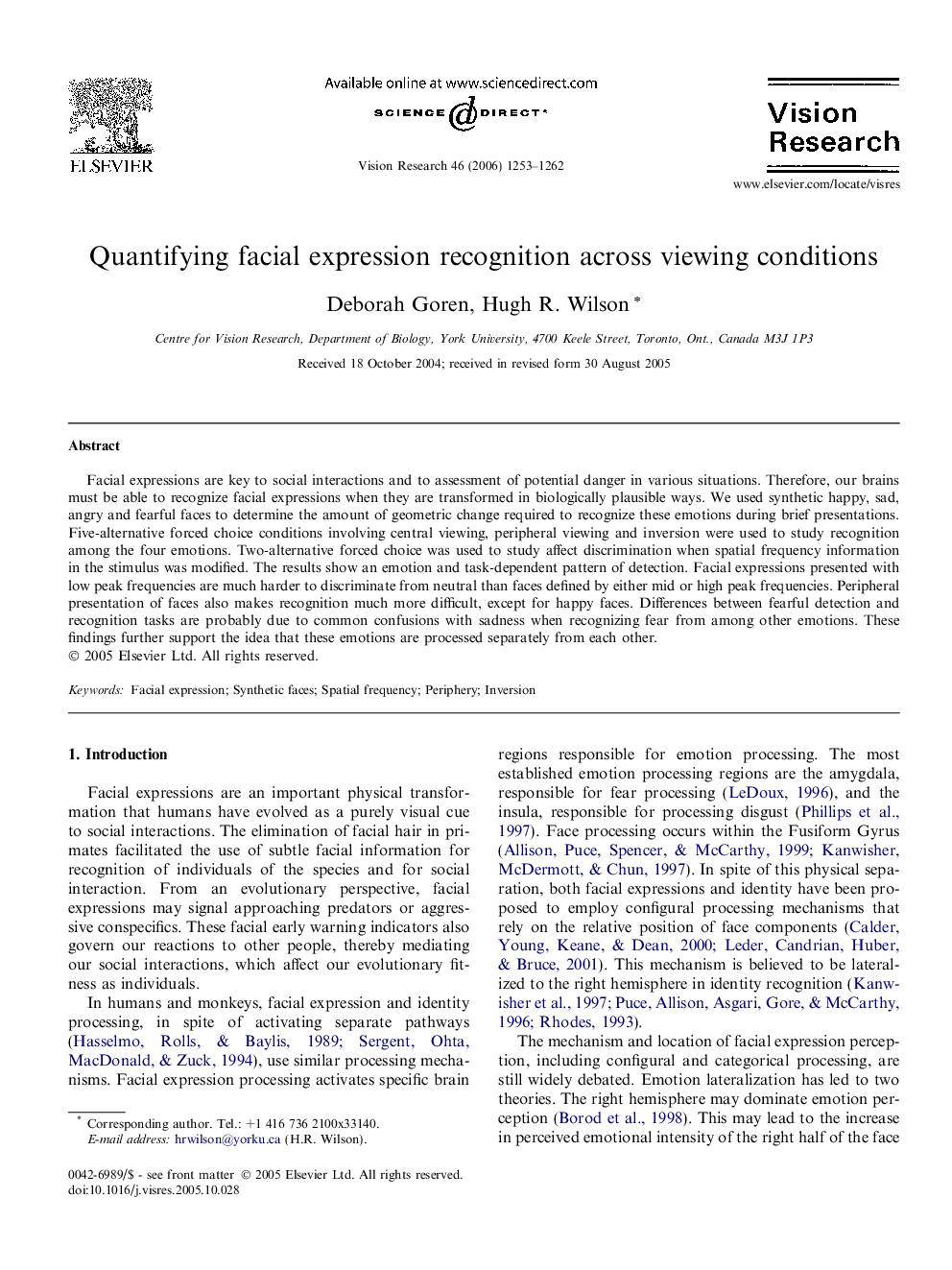| Article ID | Journal | Published Year | Pages | File Type |
|---|---|---|---|---|
| 4035297 | Vision Research | 2006 | 10 Pages |
Facial expressions are key to social interactions and to assessment of potential danger in various situations. Therefore, our brains must be able to recognize facial expressions when they are transformed in biologically plausible ways. We used synthetic happy, sad, angry and fearful faces to determine the amount of geometric change required to recognize these emotions during brief presentations. Five-alternative forced choice conditions involving central viewing, peripheral viewing and inversion were used to study recognition among the four emotions. Two-alternative forced choice was used to study affect discrimination when spatial frequency information in the stimulus was modified. The results show an emotion and task-dependent pattern of detection. Facial expressions presented with low peak frequencies are much harder to discriminate from neutral than faces defined by either mid or high peak frequencies. Peripheral presentation of faces also makes recognition much more difficult, except for happy faces. Differences between fearful detection and recognition tasks are probably due to common confusions with sadness when recognizing fear from among other emotions. These findings further support the idea that these emotions are processed separately from each other.
